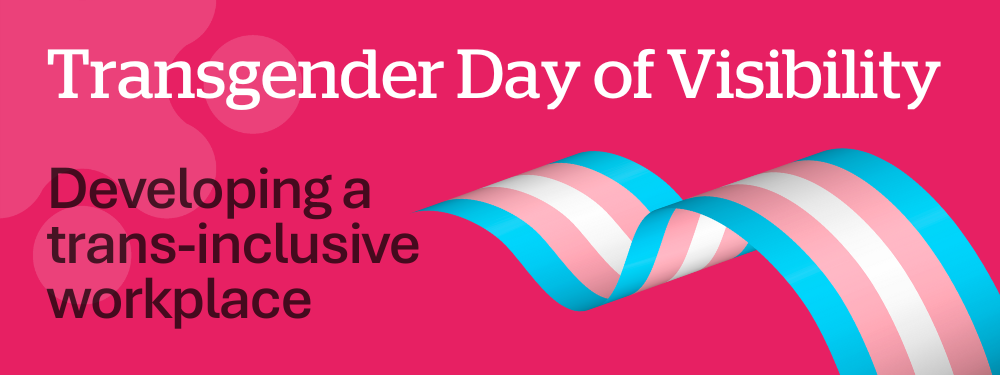Submitted by colette.bradley... on

Sunday 31 March marks this year’s annual International Transgender Day of Visibility. The day is dedicated to recognising the resilience and accomplishments of the transgender community, while also raising awareness about the discrimination and violence still faced by transgender people.
According to Stonewall’s LGBT in Britain Work Report (2018), a third of trans people reported being the target of negative comments or conduct from work colleagues in the previous year, with higher rates of harrassment and bullying being faced by disabled and/or Black, Asian and minority ethnic trans people. As a sector of organisations which are committed to tackling injustice in our communities, we can lead the change in developing welcoming and inclusive workplaces for our transgender colleagues and service users.
Here are some actions you could take, and how we are embedding them at Action Together:
1. Brush up on your language. We recognise that there can be some anxiety over saying the ‘wrong’ thing, so we are working on including glossaries of terms in all of our EDI documentation to support colleagues in feeling confident with their choice of words. You can find some helpful terms to get started at the bottom of this document.
2. Make respecting pronouns the norm. All of our email signatures contain the sender’s pronouns, and you will hear many of our colleagues introduce themselves by name and pronoun in meetings. This normalises sharing pronouns, so when a transgender or non-binary person shares theirs, they won’t stand out as the ‘only one’.
3. Assess how inclusive your policies are. Our policies are constantly under review so we can ensure that policies relating to parental leave, harrassment and bullying, and health and wellbeing provide explicit protection for employees of all genders.
4. Provide inclusive facilities. Gender-neutral toilets are available at both our Oldham and Rochdale offices, with Rochdale also providing gender-neutral shower rooms. We actively work with the building managers of our office sites to improve the inclusivity of the facilities available to our employees.
5. Create opportunities for feedback, and act on it. Our new supervision template includes dedicated questions relating to EDI, and we regularly survey our teams to ask how we can be a more inclusive organisation. We are working on formalising our feedback procedures outside of these specific opportunities, including ensuring each locality has at least one dedicated equity and inclusion champion, and creating an anonymous online reporting procedure. We also report back to employees when action is taken so they can trust their voices are being heard.
6. Develop a culture where learning is encouraged and facilitated. We have dedicated spaces for employees to share information and resources about different experiences and perspectives.
Helpful terms - remember, individuals know themselves best, so try to use the language they use to describe themselves!
Gender - the social norms typically associated with members of a particular sex/an individual’s identity in relation to these norms e.g. man, woman, non-binary etc.
Sex - the physical characteristics used to categorise people based on their genitalia, chromosomes, and hormones e.g. male, female, intersex.
Intersex - an adjective used to describe somebody who was born with a combination of male and female genitalia/chromosomes/hormones. Many intersex people are unaware of their intersex status, as doctors frequently determine sex based on external genitalia alone.
Transgender - an adjective used to describe any person whose gender doesn’t match the sex they were assigned at birth. This can include trans men, trans women, non-binary people, etc.
Non-binary - an adjective used to describe an individual who doesn’t identify solely with the terms man or woman. This can include agender (people who don’t identify with any gender), gender fluid (people whose identity is not fixed), and other terms.
Cisgender - an adjectives used to describe any person whose gender does match the sex they were assigned at birth e.g. women who were assigned female at birth, men who were assigned male at birth.
Pronoun - a word used to refer to a person in place of their name e.g. he/she/they. People’s pronouns can, but do not always, reflect their gender.
AFAB - stands for Assigned Female At Birth, and means that a person’s original birth certificate said they were female. Some trans men and non-binary people may use this term to explain that they were given the label of female when they were born.
AMAB - stands for Assigned Male At Birth, and means that a person’s original birth certificate said they were male. Some trans women and non-binary people may use this term to explain that they were given the label of male when they were born.
